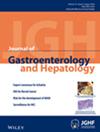Trends in Stomach Cancer Burden in China: A Joinpoint and APC Analysis Based on GBD 2021
Abstract
Background and Aim
To study the corresponding strategies to control stomach cancer, a comprehensive assessment of the disease burden is required. Herein, we present long-term trends in the burden of stomach cancer in China over the past three decades, as well as its epidemiological features.
Methods
We characterized the burden of stomach cancer in China using the GBD 2021 methods and results, based on prevalence, incidence, mortality, years of life lost (YLLs), years lived with disability (YLDs), and disability-adjusted life years (DALYs) estimated using the DisMod-MR 2-1. We also used joinpoint and age–period–cohort (APC) analysis methods to interpret the epidemiological characteristics of stomach cancer, project the disease burden of stomach cancer in China over the next decade, and compare these trends with global prevalence patterns.
Results
The age-standardized incidence (ASIR) and mortality rates (ASMR) in both sexes changed from 48.03 (40.21, 56.69) to 29.05 (22.42, 36.2) and from 46.05 (38.88, 54.43) to 21.51 (16.66, 26.61) per 100 000 people in China from 1990 to 2021. The age-standardized DALY rate in China decreased from 1181.61 (978.38, 1390.89) per 100 000 people in 1990 to 501.26 (387.29, 627.98) per 100 000 people in 2021. The average annual percentage change (AAPC) in age-standardized incidence, prevalence, and mortality rates for stomach cancer in China were −1.61 (95% CI: −1.73, −1.48), −0.50 (95% CI: −0.67, −0.32), and −2.44 (95% CI: −2.62, −2.26). The effects of age, period, and cohort on mortality rates differed.
Conclusions
In the next decade, China's ASIR and ASMR for stomach cancer will continue to decline. However, despite the decrease in incidence, the overall burden of stomach cancer in China will remain significantly higher than the global average. The burden of stomach cancer in China will be a major public health challenge, given the country's large population base and aging population.

 求助内容:
求助内容: 应助结果提醒方式:
应助结果提醒方式:


